I wanted to share some photos and a recent story related to the household fishponds that long time MCC partner Organization to Develop Our Villages (ODOV) is constructing in four rural districts of Prey Veng province.
This is part of a larger project funded by MCC and the Canadian Foodgrains Bank to support rural Agricultural Cooperatives across 90 villages to become robust and self-sustaining. The long term goal of this five year project is for ODOV to ‘work itself out of a job’ by pushing technical, instructional, and organizational capacity out to local village systems. ODOV, which was originally a MCC integrated community development project before localizing in 2004, will continue to operate but will shift focus to new areas.
Mesang district, where ODOV is located, has poor soil quality and is drought prone. MCC has been supporting fishponds as a form of sustainable agriculture there going back to the 1990s. ODOV has continued to develop the local fishpond model and to fit it into a cyclical farming model that includes vegetable gardens and chickens. The photos here are from fishponds dug just a few months ago during the dry season. These are the latest ‘generation’ of fishpond which include more plant cover, a larger mini-dike to contain rainy season overflow, and a stronger fence.
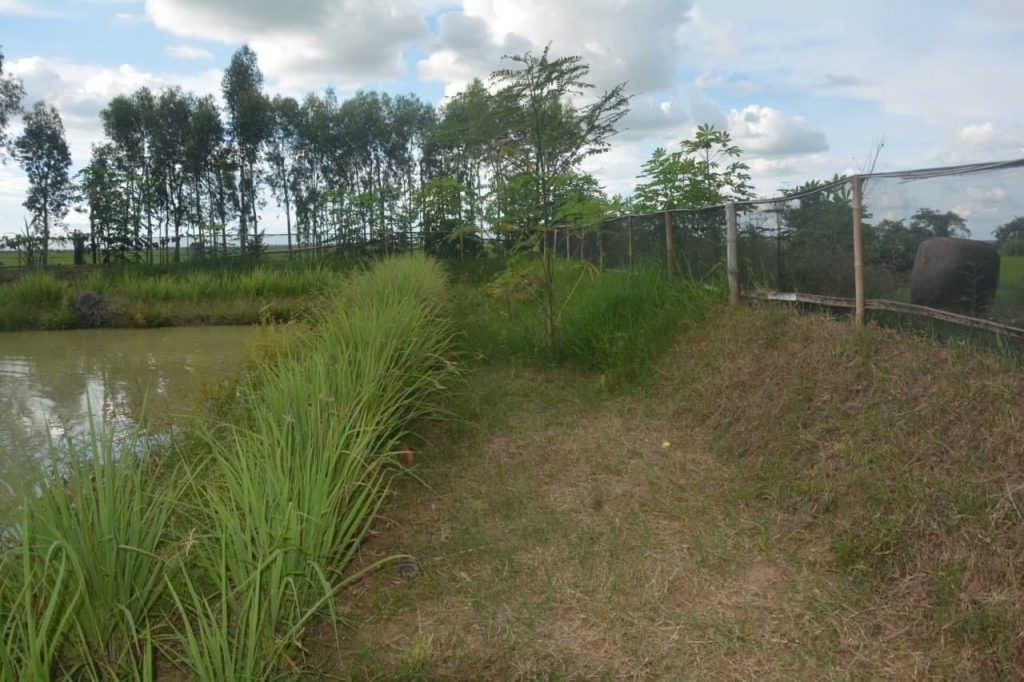
Since these photos are of new fishponds, dug just a few month ago, the personal impact has not been recorded yet. Instead I’ll share the personal impact story from a fishpond dug in 2016 in the same district.
Before participating in ODOV project, the living condition of Eng Sameth’s family was so difficult. She was faced with food shortages almost the entire year. Eng Sameth participated in the ODOV food security project funded by CFGB-MCC in June 2016. She obtained knowledge and skills on agriculture techniques through participating in trainings and receiving ongoing technical support from ODOV project staff. Eng Sameth, applied the knowledge that she learned to raise fish in the fishpond that ODOV dug for her. In addition to raising fish, she also grew vegetables and raised chickens to meet her household food needs.
“After participating in the project’s activity, my family living condition has changed, like increased knowledge, income, and especially access to family food security. My family has enough food to eat, I have enough fish and vegetables to eat all year round and I earn extra income by selling surplus fish and vegetables I produced” Said Eng Sameth.
Eng Sameth explained that it is easy to raise fish, it takes less time than rice farming and is more reliable since it doesn’t require rainfall to come at the right time. Catfish can be harvested within a few months. Regarding the sale of fish, she said that there’s no worry at all, fish is in high demand in the market and easy to sell. Eng Sameth’s fish is sold in front of her house and the villagers come and buy fish at her house and she receives a good price of selling fish. Eng Sameth gets 15,000 Khmer Riels ($3.75) per kg of fish. Eng Sameth confirmed that through raising fish, her family has enough fish to eat all year around and she also earns profits 1,500,000 Khmer Riels ($375) from selling fish within three months. The money that she makes are used for agriculture productions, purchase households items, paying for social events such as wedding or ceremonies as well as purchase school supplies for grant children.
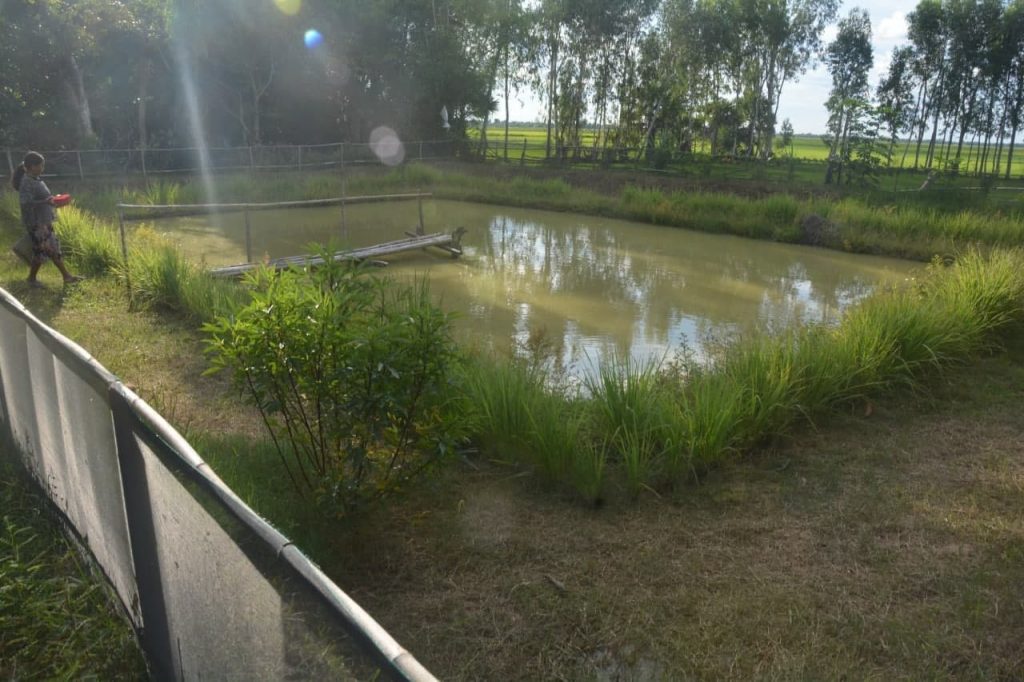
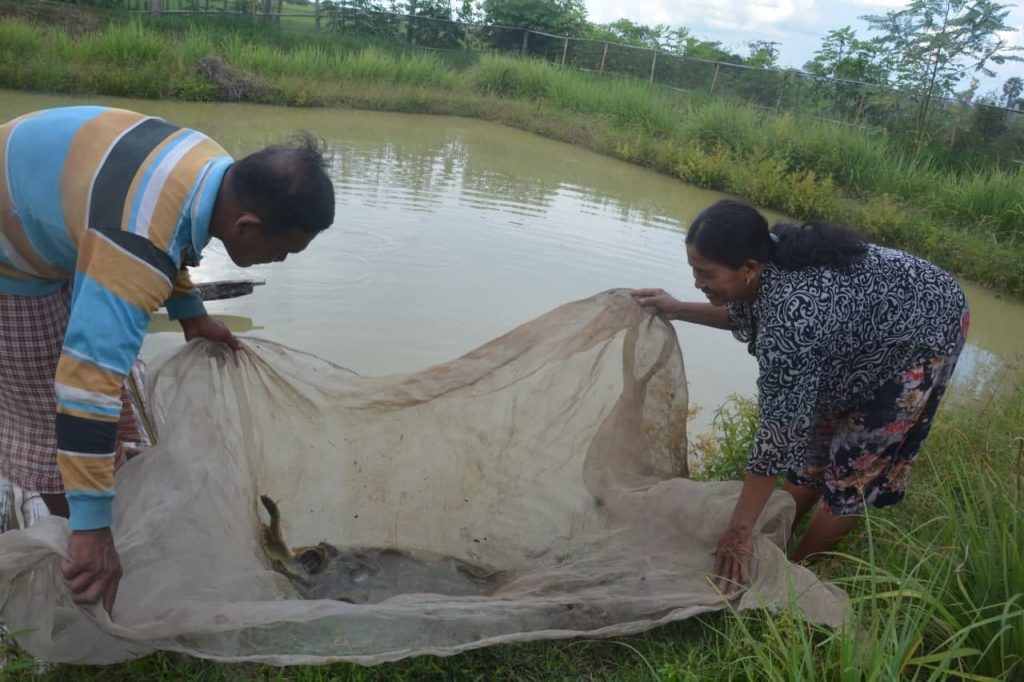
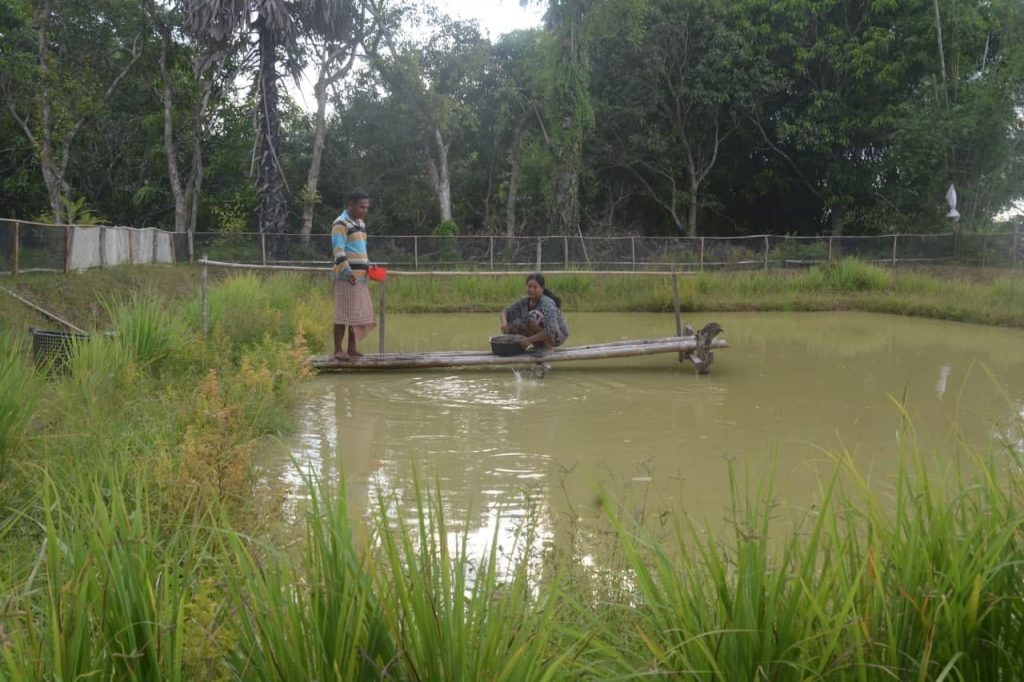
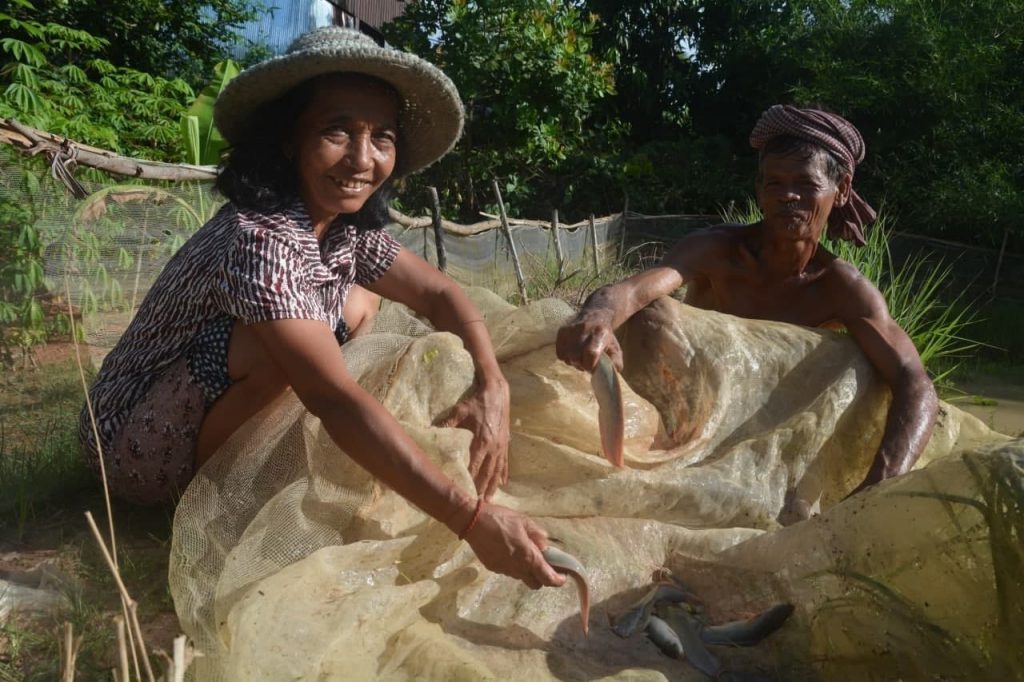
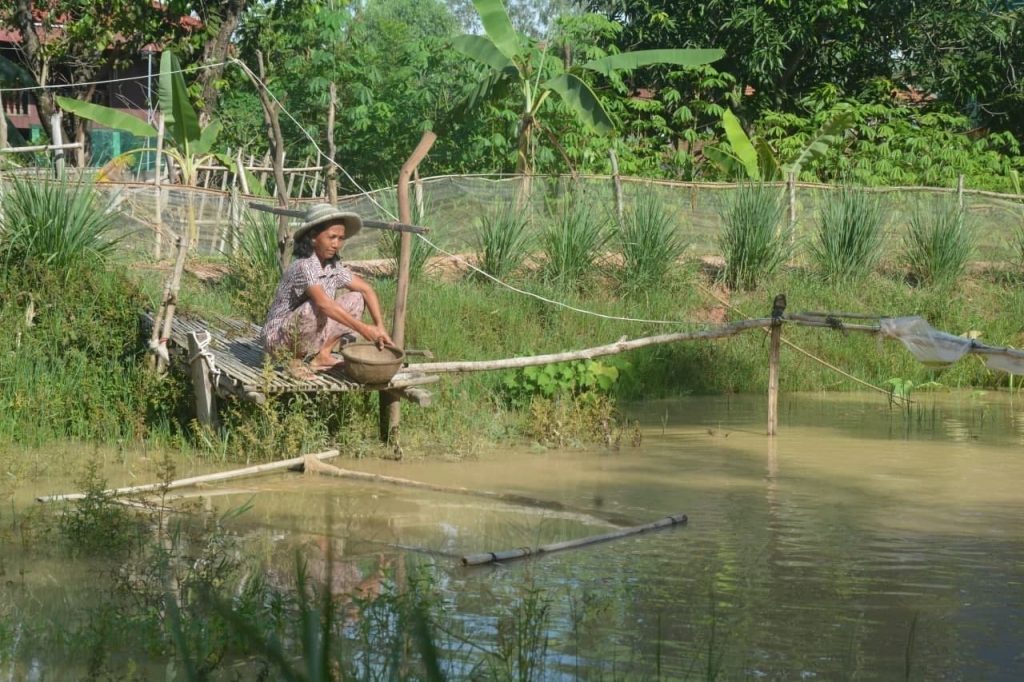
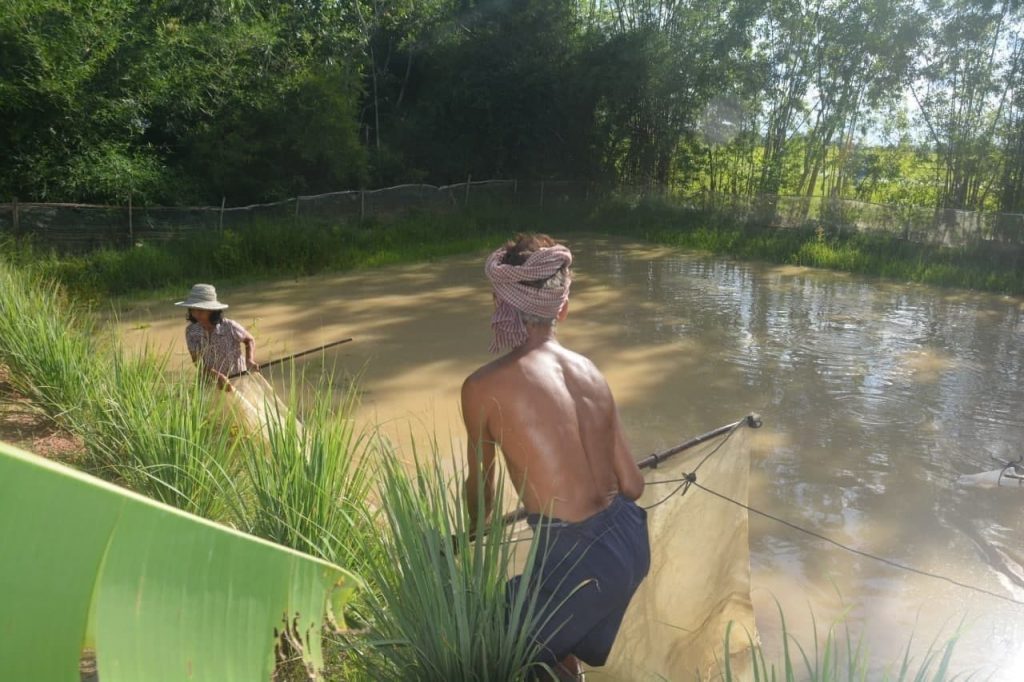
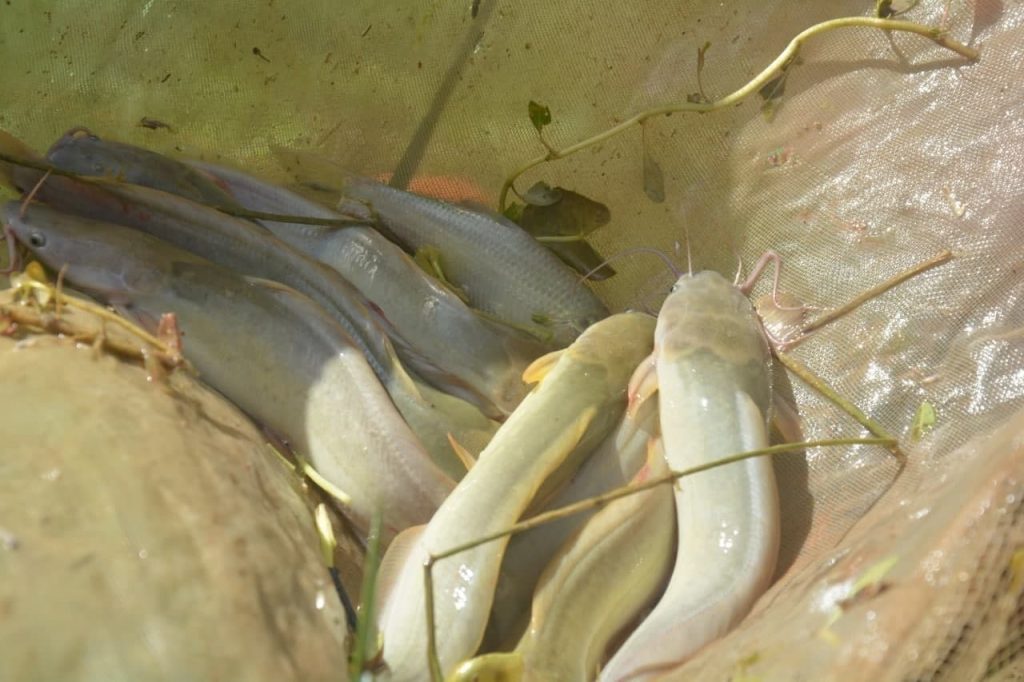
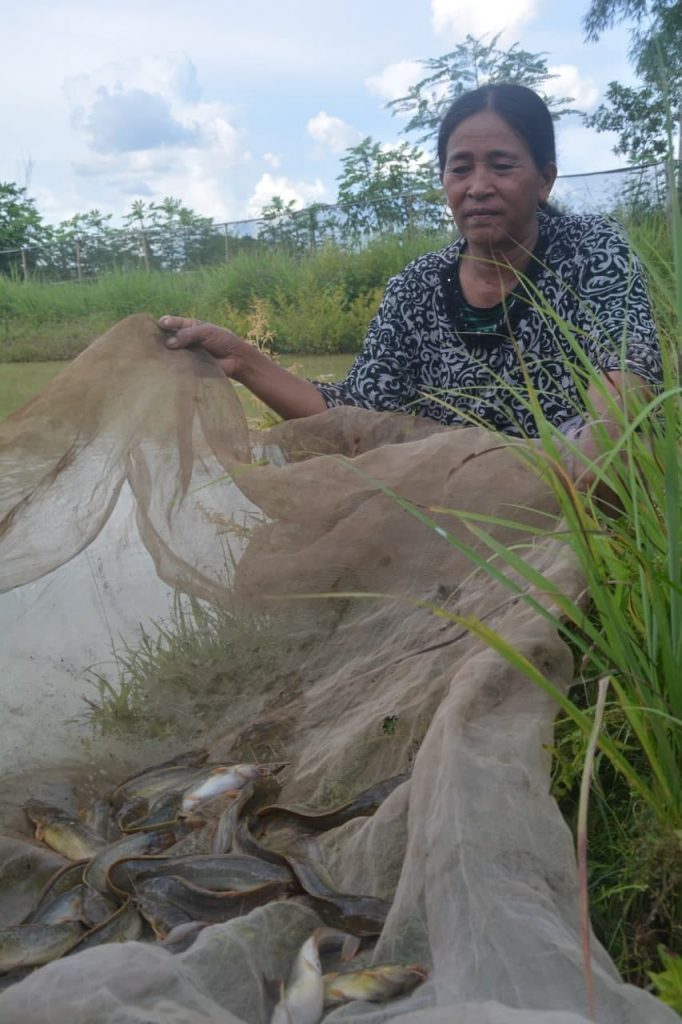
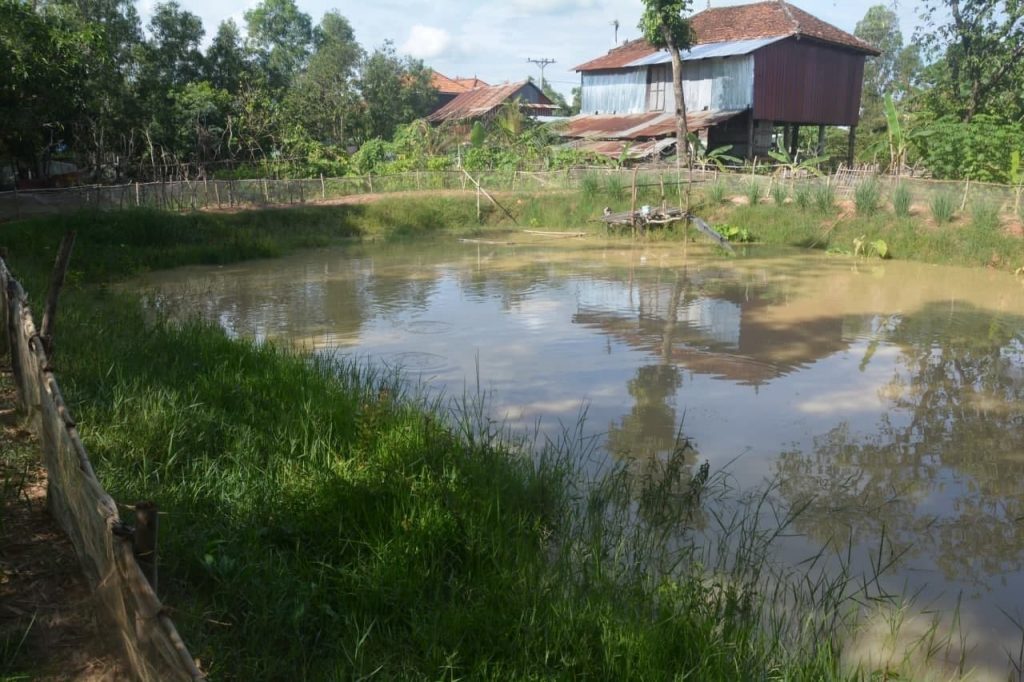
This is important work … helping a family to be self-sufficient and even more … making a profit. I’m so amazed by the work that you do.
Thanks Carol! The organization we are with has a great system philosophy for development and we are grateful to be part of nonprofit work that is working well. One of my favorite things about this project is how it targets the poor and so much of the support isn’t just the material thing to get started (fish ponds, or chickens, or seeds), but the program provides weekly personal visits, coaching and support for the farmers to learn new, sustainable habits and trouble-shoot situations. I sometimes joke that it’s like an OT designed it, understanding that learning new habits and routines takes time for all of us.
It’s the teach a person to fish story in real life isn’t it. I imagine it is beneficial for the whole community too as they all have easy access to fish and veggies .
Yes, that’s true; the goal is to strengthen vulnerable communities, not just help a few farmers. All of the direct assistance, like digging fishponds or vegetable seeds, goes to poor community members but the improved food access, training, and organizing benefit the whole community. One farmer I visited in March 2020 told me that the vegetables she grows are higher quality than the ones in the market too.
Wow! What cool and empowering work! What are the fences for?
Thanks Nancy. The fishponds have always had fences to keep animals out but we asked them to incorporate a stronger fence into the design soon after we came. Accidental drowning is the leading cause of child death in Cambodia. There’s never been a drowning in one of these fishponds but that’s a call we never want to get.